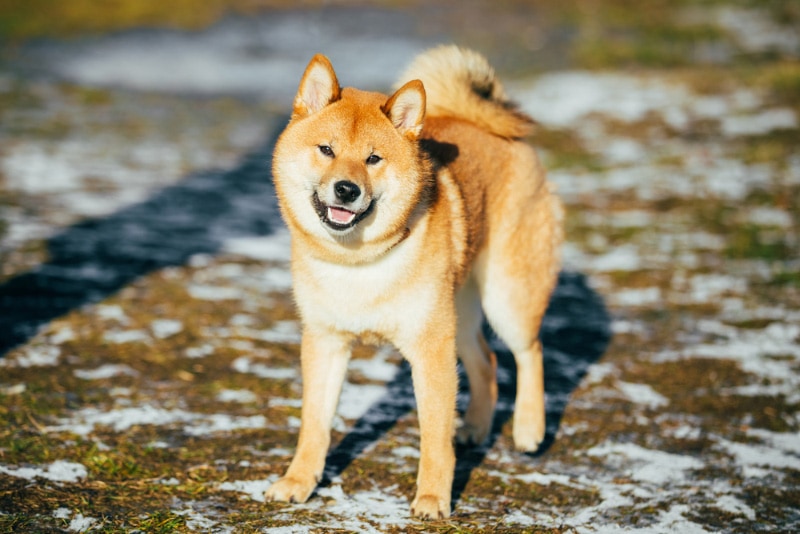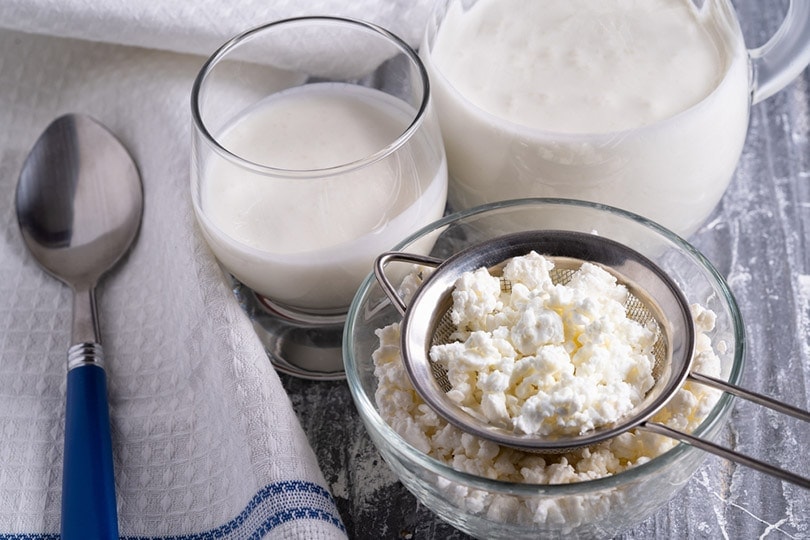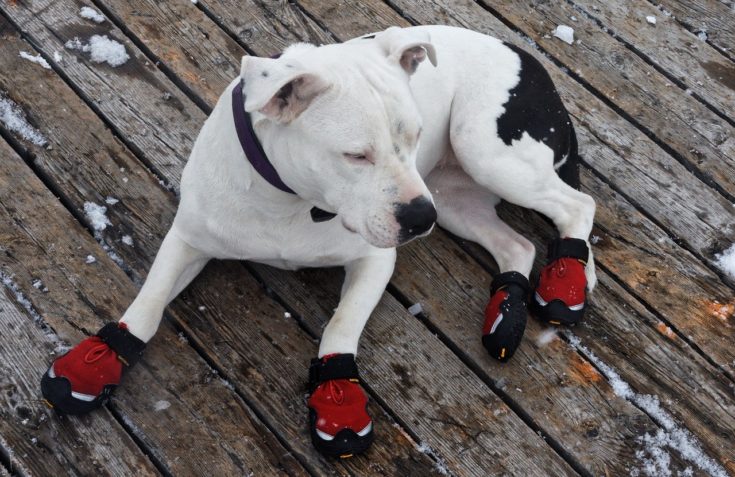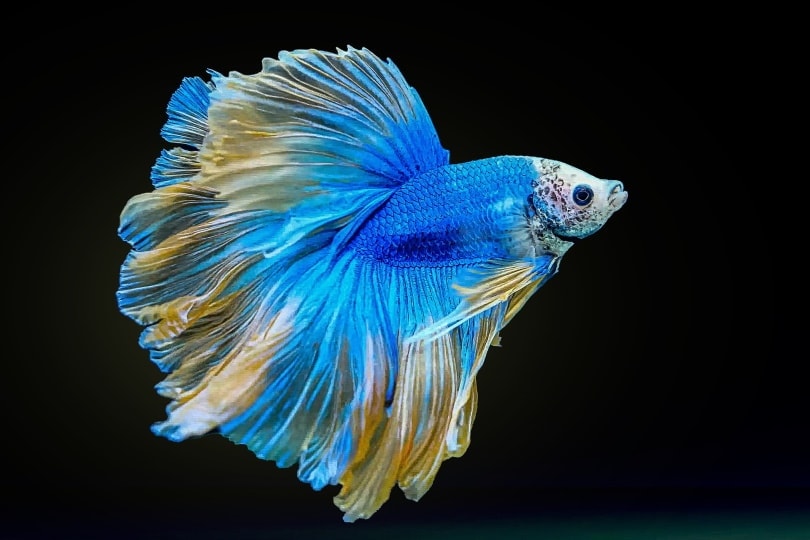Tamaskan Dog Breed: Info, Pictures & Traits

Updated on
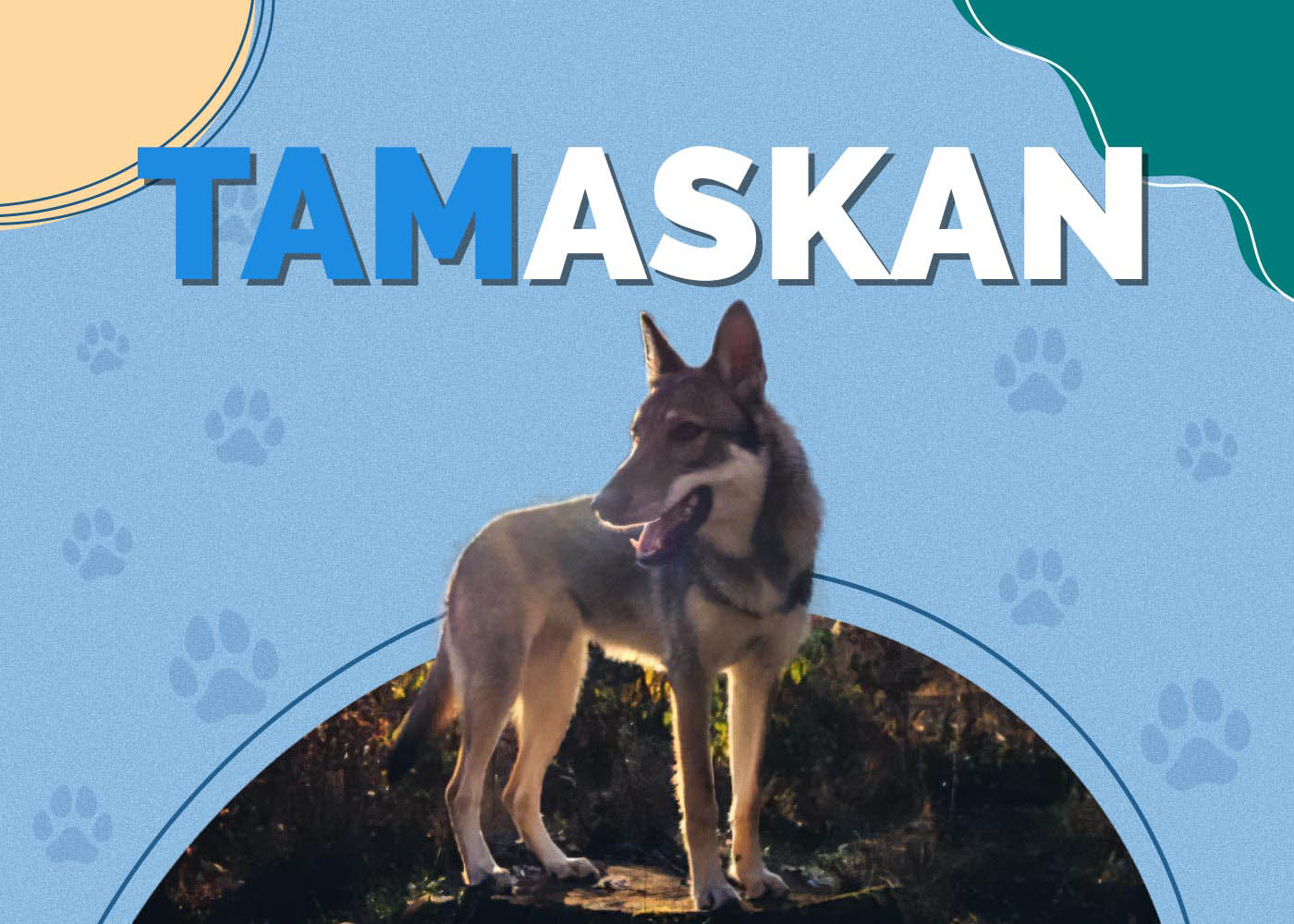
Discover the unique and fascinating Tamaskan dog breed, known for its loyalty, intelligence, and striking appearance. Read on to learn more about this exceptional breed that is perfect for active families and those seeking a low-shedding companion.
| Height: | 12–18 inches |
| Weight: | 15–35 pounds |
| Lifespan: | 12–15 years |
| Colors: | White, blue, silver, red, brown, gray, black |
| Suitable for: | Active families, those looking for a low-shedding dog |
| Temperament: | Loyal & loving, intelligent, easy to train, friendly, gets along with other pets |
The Tamaskan dog is an interesting breed that is a mix of Siberian Husky, Alaskan Malamute, and German Shepherd. These dogs have inherited the best traits from their parent breeds, making them loving, intelligent, and easy to train. The Tamaskan’s charming personality and striking appearance make it a popular choice among dog enthusiasts.
Tamaskan Dog Breed Characteristics
Tamaskan Dog Puppies
Tamaskan puppies are energetic, curious, and playful. They require early socialization and consistent training to ensure they grow into well-behaved adult dogs. Finding a Tamaskan puppy might require some effort, as they are not as common as other breeds. You may need to find a reputable breeder or search through breed-specific rescue organizations to find your perfect Tamaskan puppy.
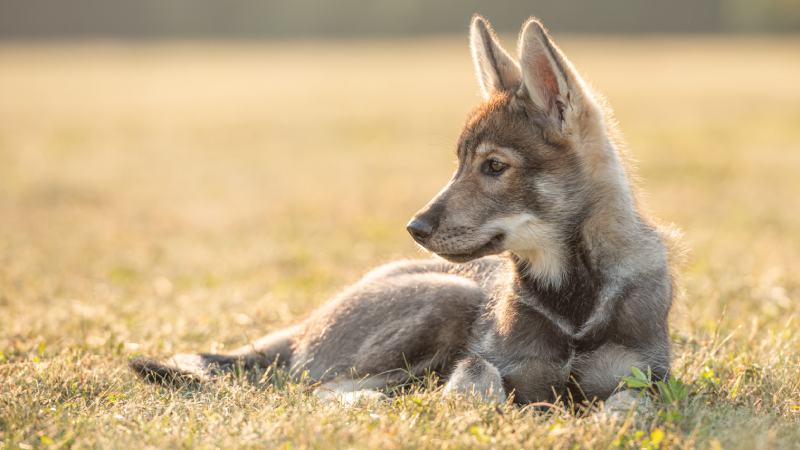
A Word About Choosing a Reputable Breeder
When searching for a Tamaskan puppy, it’s essential to choose a reputable breeder who prioritizes the health and well-being of their dogs. A responsible breeder will be knowledgeable about the breed, adhere to ethical breeding practices, and provide a supportive environment for their puppies. Here are some tips to help you find a reputable Tamaskan breeder.
Begin by researching breeders, reading reviews, and seeking recommendations from trusted sources such as veterinarians, dog trainers, or breed-specific forums. Don’t hesitate to ask the breeder questions about their breeding practices, the parents’ health history, and any genetic testing they perform. A reputable breeder should be transparent and willing to answer your questions thoroughly.
Arrange a visit to the breeder’s facility to see the conditions in which the puppies are raised. Puppies should be kept in a clean, safe, and social environment. Meeting the puppy’s parents can give you an idea of their temperament and appearance, which may be inherited by the puppies. A reputable breeder will provide health certifications for the puppy’s parents and offer a health guarantee for the puppy. This shows their commitment to the well-being of their dogs and helps ensure you’re getting a healthy puppy.
Puppies should be well-socialized with people, other dogs, and various environments. This early socialization is crucial for developing a well-adjusted adult dog. A responsible breeder will be available to provide guidance and support even after you’ve taken your puppy home. They should be genuinely interested in the welfare of their puppies and be willing to help with any questions or concerns that may arise.
By choosing a reputable breeder, you’re not only getting a healthy, well-adjusted Tamaskan puppy but also contributing to ethical breeding practices. Remember that patience is key – finding the right breeder and waiting for the perfect puppy may take time, but it’s worth the effort to ensure a happy and healthy companion.
 Temperament & Intelligence of the Tamaskan
Temperament & Intelligence of the Tamaskan
The Tamaskan dog is known for its loyal, loving, and intelligent nature. These dogs are highly adaptable and possess a keen sense of awareness, making them excellent companions and protectors. Their intelligence and eagerness to please their owners make them quick learners, which in turn makes them easy to train. They thrive on mental stimulation and enjoy engaging in activities that challenge their minds, such as puzzle toys or obedience training. Tamaskans are a great fit for families with children, as they are gentle, patient, and playful with kids of all ages.
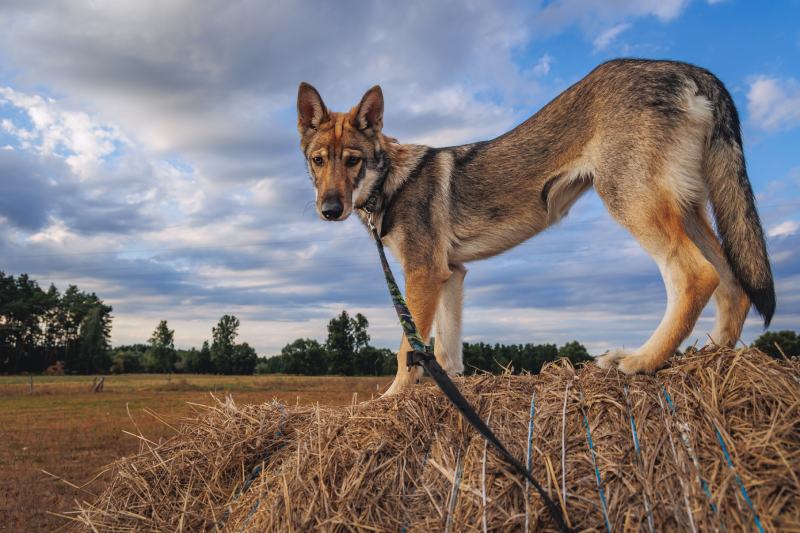
Are These Dogs Good for Families? 👪
Yes, Tamaskans are excellent family dogs. They are friendly, good with children, and enjoy being part of an active household. Their loving and protective nature makes them ideal companions for families, as they form strong bonds with their human pack members. Tamaskans are also known for their patience and tolerance towards children, making them safe and enjoyable playmates. However, it is essential to teach children how to interact respectfully with dogs to ensure a harmonious relationship between the Tamaskan and the family.
Does This Breed Get Along With Other Pets?
Tamaskans generally get along well with other dogs and pets, especially if they are raised together from a young age. Their sociable nature allows them to befriend other animals, including cats and smaller pets. However, early socialization and proper introductions are crucial to ensure a smooth integration into a multi-pet household. It is essential to monitor interactions between the Tamaskan and other pets initially, gradually increasing their time spent together as they become more comfortable with each other.

Things to Know When Owning a Tamaskan:
Food & Diet Requirements 🦴
The Tamaskan requires high-quality dog food appropriate for their size, age, and activity level. This breed may benefit from a diet rich in protein to support their energy needs and lean muscle mass. Consult your veterinarian for specific dietary recommendations based on your Tamaskan’s individual needs, as each dog’s requirements may vary.
Exercise 🐕
Tamaskans are energetic dogs that require daily exercise to keep them physically and mentally stimulated. Activities such as walks, hikes, or play sessions in a fenced yard are ideal for this breed. They also enjoy engaging in dog sports like agility, obedience, or even sled pulling, which can provide an excellent outlet for their energy and intelligence.
Provide your Tamaskan with interactive toys and puzzles that challenge their minds, helping to prevent boredom and keep them mentally stimulated. Visiting off-leash dog parks allows your Tamaskan to socialize with other dogs and burn off excess energy in a controlled environment. Tamaskans also love exploring the great outdoors, making them ideal companions for hiking, camping, and other outdoor adventures.

Training 🎾
Consistent, positive reinforcement training is essential for this intelligent breed. Tamaskans respond well to rewards-based training methods, which help strengthen the bond between dog and owner while reinforcing desired behaviors. Early socialization is also important to ensure a well-mannered adult dog. Exposing your Tamaskan to various environments, people, and other animals from a young age will help them develop into a confident and adaptable companion.
Socialization and Training Tips for Your Tamaskan
Enrolling your Tamaskan puppy in a socialization class can provide a structured environment for them to interact with other puppies and people. These classes help build confidence, teach essential social skills, and create positive associations with new experiences.
Gradually expose your Tamaskan to various environments, sounds, and situations from a young age. This will help them develop into a confident and adaptable adult dog. Crate training can be an effective method for housebreaking your Tamaskan, providing them with a safe and secure space when unsupervised. Establish a consistent routine and reward your puppy for eliminating in the designated area to reinforce good habits.
Start teaching your Tamaskan basic commands like “sit,” “stay,” “come,” and “leave it” early on. Consistent, positive reinforcement training will strengthen the bond between you and your dog while promoting good behavior.
Grooming ✂️
Tamaskans have a low-shedding coat that requires regular brushing to remove loose hair and prevent matting. Brushing also helps distribute the natural oils in their coat, promoting a healthy and shiny appearance. Occasional baths with a gentle dog shampoo are recommended to keep their coat clean and odor-free. Additionally, pay attention to their nails, ears, and dental hygiene as part of their grooming routine.
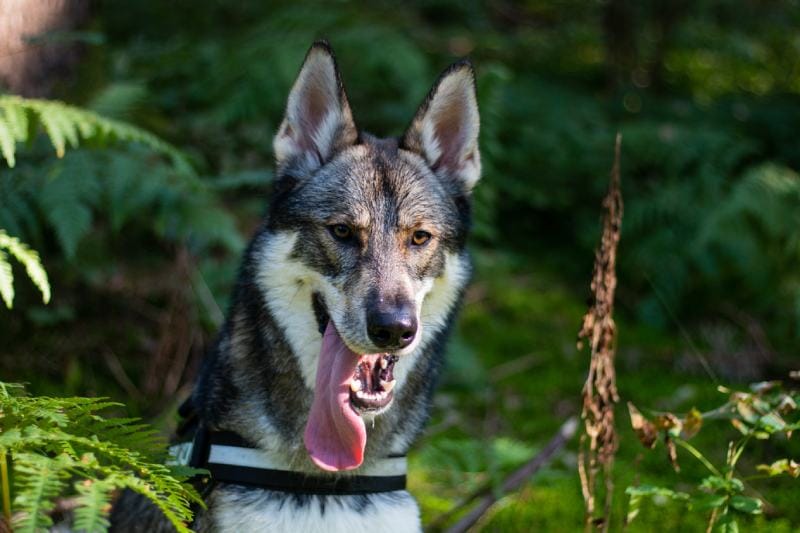
Health and Conditions 🏥
The Tamaskan may be prone to certain health conditions, including hip dysplasia, eye issues, and allergies. Regular veterinary check-ups and preventative care can help detect and manage these conditions early on, ensuring a happy and healthy life for your Tamaskan.
- Allergies: Tamaskans can develop allergies to environmental factors, food, or fleas. Identifying and managing the allergens can help alleviate symptoms and improve your dog’s overall well-being.
- Hip dysplasia: A genetic condition that affects the hip joint, causing pain and mobility issues. Regular veterinary check-ups, maintaining a healthy weight, and providing joint supplements can help manage this condition.
- Eye issues: Tamaskans may be prone to various eye problems, such as cataracts or progressive retinal atrophy (PRA). Regular eye exams and early detection can help preserve your dog’s vision.
Male vs Female Tamaskans
Male and female Tamaskans are generally similar in temperament and appearance, with males being slightly larger than females. Individual personality traits may vary between dogs, regardless of gender. However, there are a few subtle differences that may be observed between the two.
Males typically have a more robust build, while females may have a slightly more delicate appearance. Males can also be more territorial and assertive, whereas females might be more nurturing and gentler. It’s essential to remember that these differences can vary significantly between individual dogs, and factors such as upbringing, training, and socialization play a crucial role in shaping a dog’s behavior and personality.
When choosing a Tamaskan, it’s important to consider your personal preferences and lifestyle, as well as the specific needs of each dog. Meeting both male and female Tamaskans before making a decision can give you a better understanding of their individual personalities and help you determine which gender would be the best fit for your household. Regardless of whether you choose a male or female Tamaskan, proper training, socialization, and care are vital for ensuring a well-mannered and loving companion.
3 Little-Known Facts About the Tamaskan
1. The Tamaskan is a relatively new breed, developed within the last few decades.
2. Despite their thick coats, Tamaskans are considered low-shedding dogs.
3. The Tamaskan’s unique combination of breeds gives it a stunning appearance with a variety of coat colors and patterns.

Final Thoughts
The Tamaskan breed of dogs are not only visually appealing, but also smart and devoted, making them a great match for families who lead an active lifestyle. When trained, socialized, and nurtured properly, Tamaskans can prove to be a delightful addition to any household. If you desire a furry and amiable companion that sheds minimally and has a captivating personality, the Tamaskan breed could be an ideal option for you.
Featured Image Credit: Fotokon, Shutterstock




